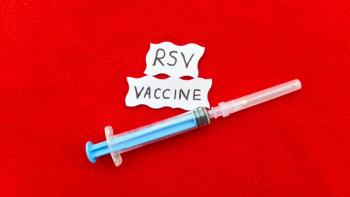
Infliximab Biosimilar Initiation Has Increased in Pediatric IBD, Study Finds
Key Takeaways
- Infliximab biosimilar use in pediatric IBD rose to 42% by 2023, with 88% of ICN centers adopting them.
- Anti-TNFs remain the only FDA-approved class for pediatric IBD, prompting biosimilar use for cost and accessibility.
The study found biosimilar initiation rose to nearly 42% from 2016 to 2023.
Study findings published in Children demonstrate that the percentage of pediatric patients with inflammatory bowel disease (IBD) who initiated an infliximab (Remicade; Janssen Biotech, Inc) biosimilar rose to nearly 42% by 2023. That same year, approximately 88% of the evaluated ImproveCareNow (ICN) Network centers were observed to be using biosimilars.1
IBDs, such as ulcerative colitis and Crohn disease, are chronic inflammatory disorders of the gastrointestinal tract that are typically diagnosed in adolescence and young adulthood, with rising incidences observed in pediatric populations. These diseases are caused by a dysregulated mucosal immune response to the intestinal microflora in hosts who are genetically predisposed. Although children can present “classic” symptoms (eg, weight loss, abdominal pain, bloody diarrhea), many present with “nonclassic” symptoms (eg, isolated poor growth, anemia, extraintestinal manifestations). When diagnosed, therapeutic goals include eliminating symptoms, normalizing and improving quality of life, restoring growth, and preventing potential complications while minimizing any medication-related adverse events.2
Tumor necrosis factor alpha inhibitors (anti-TNFs) have become both first- and second-line therapies for the treatment of pediatric patients with Crohn disease and ulcerative colitis. The authors noted that access to FDA-approved treatments for pediatric IBD continues to be substantially limited because anti-TNFs are currently the only class of medications that are indicated for pediatric IBD, even though there are multiple medications with different mechanisms of action approved for adults. For this reason, along with reduced costs and improved accessibility while achieving similar safety and efficacy, biosimilars have been introduced in this age group and disease state.1,2
The authors wrote that a 2018 survey from the Crohn’s and Colitis Foundation reported that health care professionals expressed discomfort when prescribing biosimilars in the pediatric population compared with adults. This is likely because of the relative novelty of biosimilar utilization within the pediatric IBD setting. To address this, the investigators examined the initiation of infliximab biosimilars in a large pediatric cohort and assessed whether there were differences in initiation or use by age, race, and/or region.1
For this retrospective cohort study, the investigators collected data from January 1, 2016, to December 31, 2023, to assess the uptake of biosimilars within the pediatric IBD space. Data came from the ICN Network and encompassed 4602 patients across 73 centers. All patients who started any infliximab therapy, whether an originator or a biosimilar (infliximab-dyyb [Inflectra; Celltrion Healthcare Corp], infliximab-abda [Renflexis; Samsung Bioepis], or infliximab-axxq [Avsola; Amgen]), were included, and descriptive statistics were utilized to summarize patient characteristics and changes in the use of infliximab agents. Other demographics included were age at the time of IBD diagnosis, IBD type and phenotype at infliximab initiation, as well as race, ethnicity, and sex.1
Among the 4602 patients who were included, approximately 45% were female, and the median age at the time of infliximab initiation was about 13.7 years (IQR: 8.3–16.2 years). Most patients had Crohn disease (70%). The authors observed that 3807 patients had started on the infliximab originator and 795 were started on a biosimilar, with no clinical significance observed between the 2 groups.1
The authors noted that infliximab biosimilars entered the market in November 2016, so there were no patients who initiated one that year. One patient started Inflectra in 2016 and 2017. The percentage of patients who initiated an infliximab biosimilar steadily increased from 1% in 2018 to almost 42% in 2023, with Inflectra outpacing the use of Renflexis and Avsola.1
Interestingly, there were similar rates of biosimilar initiation by age group every year except for 2020 (P = .03), which the authors deduced was likely because of the small number of patients initiating anti-TNFs in the under-6-year age group (n = 17) in 2020. Additionally, there was a significant difference by race in 2020, with patients grouped as “other” having a higher percentage of biosimilar use than Black or White patients; however, throughout the study period, there were generally no differences in rate of biosimilar use by ethnicity. Infliximab biosimilars were used at higher rates from 2020 to 2023 in the Midwest, West, and Southwest regions compared with the Northeast and Southeast US (P = .05).1
About 17.3% of patients who initiated infliximab were started on an infliximab biosimilar from 2016 to 2023. There was a slow uptake of infliximab biosimilar use among the ICN centers. Initially, only 1 center (1.9%) within ICN used an infliximab biosimilar in 2016, and 5 (8.2%) used an infliximab biosimilar in 2018. From 2019 to 2023, the percentage of centers using biosimilars increased from about 38.2% (n = 26) to 88.1% (n = 59). There were 3 centers (4.1%) that prescribed the infliximab originator but never recorded prescribing any biosimilars to a patient throughout the 8 years of the study. Notably, the number of centers that had between 25% and 69% and 70% and 100% of patients starting on an infliximab biosimilar per year increased from 11 (16.2%) and 3 (4.4%) centers, respectively, in 2019 to 35 (52.2%) and 19 (28.4%) centers in 2023.1
Overall, infliximab biosimilar use had increased among ICN centers, but there were variations in biosimilar initiation among the different locations. Multiple centers were noticeably slow at utilizing biosimilars, and although there were regional differences, age, race, and ethnicity had very little impact on utilization.1
“Further research is needed about the clinical impact, treatment longevity, and changes in cost associated with large-scale biosimilar use in pediatric IBD,” the authors concluded.1
REFERENCES
1. Maltz RM, Saeed SA, Adler J. Infliximab Biosimilar Utilization in a Large Pediatric Learning Health System. Children. 2025;12(5):656. doi:10.3390/children12050656
2. Rosen MJ, Dhawan A, Saeed SA. Inflammatory Bowel Disease in Children and Adolescents. JAMA Pediatr. 2015;169(11):1053–1060. doi:10.1001/jamapediatrics.2015.1982
Newsletter
Stay informed on drug updates, treatment guidelines, and pharmacy practice trends—subscribe to Pharmacy Times for weekly clinical insights.




















































































































































































































